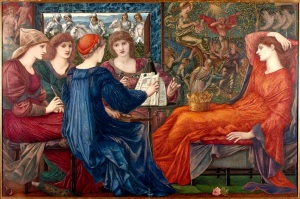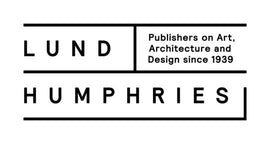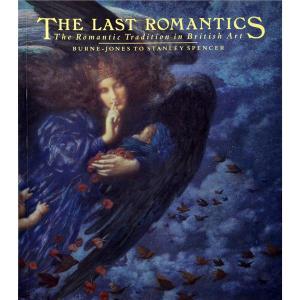Lund Humphries Landmarks – The Last Romantics: The Romantic tradition in British art: Burne-Jones to Stanley Spencer, edited by John Christian (1989)
John Hoole cherishes Lund Humphries’ 1989 publication The Last Romantics for its revelation of under explored ties between Pre-Raphaelite and Modern art, and Victorian and 20th-century culture.
Twenty five years ago, Lund Humphries published The Last Romantics: The Romantic tradition in British art: Burne-Jones to Stanley Spencer, a catalogue to accompany an exhibition at Barbican Art Gallery. It was a huge and groundbreaking study including 150 British-based artists who can best be described as part of the ‘Romantic tradition in British art’. The subject area covers five decades of work and is one that, with the advent of Modernism, scholars had largely ignored or discredited.
Looking back at John Christian’s introduction to the book, where he cogently explains the selection of the exhibition with such a self-effacing exposure of his encyclopaedic knowledge of the subject, I am reminded of what a colossal job he did to bring this study to fruition. With support from accompanying essayists MaryAnne Stephens, Paul Delaney, Lindsay Errington, Benedict Read, Alan Powers and David Fraser Jenkins, John Christian was able to bring a true scholar’s perspective to a hidden field of British art history.
Thirty years ago, I visited the hugely popular Pre-Raphaelites exhibition at the Tate Gallery and found my favourite Edward Burne-Jones, Laus Veneris, surrounded by other major works by him. I remember moving into the next room expecting to encounter works by his associates, only to find that I had exited the exhibition. My disappointment at this abrupt finale was tempered by the realisation that there was another exhibition to be made from the Tate curators’ strict demarcation of Pre-Raphaelitism. I imagined that one could grapple with the shibboleth of Alfred Waterhouse and also find a way to connect Burne-Jones to the next generation of British romantic or ‘symbolist’ artists, figures as diverse as Aubrey Beardsley, Augustus John and Stanley Spencer. By doing this, one could reveal a study of British art history as yet unwritten and, in my naïve and selfish curatorial mind, create an exhibition that I wanted to visit in the hope that others might also find it interesting. As we say now, ‘The rest is history’.

Edward Burne-Jones, Laus Veneris, 1873–1875, Oil on canvas, Laing Art Gallery, Newcastle
At Barbican Art Gallery, I had set out to commission a series of exhibitions that surveyed late 19th and early 20th-century British art, an area that was then little studied, in the hope that some favourable appreciation of our exhibition programme might mitigate the abject critical reaction to the Barbican Centre’s architecture when it opened in 1982. In 1987, our exhibition A Paradise Lost: The Neo-Romantic Imagination in Britain, a pioneering study of the Neo-Romantic period by David A Mellor, with a catalogue also published by Lund Humphries, was a precursor to John Christian’s show, and, working with John Taylor, marked the start of a fruitful collaboration between publisher and art gallery.
An article by Richard Cork in The Times in March 1992, about Barbican Art Gallery, titled ‘Victory snatched from defeat’, surveyed the first decade of our exhibition programme and illustrated the display of The Last Romantics, decorated with deep crimson walls and showing works by John William Waterhouse, Herbert James Draper and Alfred Gilbert. It was captioned: ‘An example of a well-researched, stimulating and timely exhibition’. At the time of publication those comments felt like a balm for the brow of a beleaguered curator; now, they sum up what was so prescient about John Christian’s approach.
John Hoole is a curator and writer. He has worked at Southampton Art Gallery, Museum of Modern Art, Oxford and Barbican Art Gallery, London, where he was both curator and Art Galleries Director. His most recent book (co-authored with Margaret Simons), James Dickson Innes: 1887-1914, was published by Lund Humphries in 2013.


